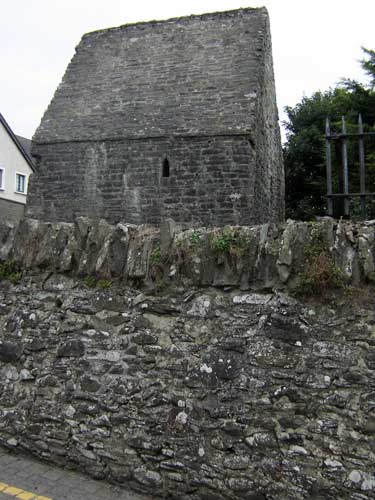Eventually the church opened up and we went in.
The mediaeval church no longer exists, except for the stone bell tower. The current St. Columba's Church stands on the site of the original one.
In 918, the monastery was plundered in a Norse raid and the original wooden church was destroyed. A great stone church was built in its place. In 1152, it was elevated to the status of Cathedral, but after the reformation laws in 1531 that led to the dissolving of the monasteries, the church fell into ruin. It was rebuilt in 1578... ruined again and used as horse stables by Cromwell's army in 1654... and repaired in 1682.
The present church was built in 1778 and a spire was added to the top of the old stone bell tower in 1783. It was altered in 1811 and again in 1858, when the interior was redone.
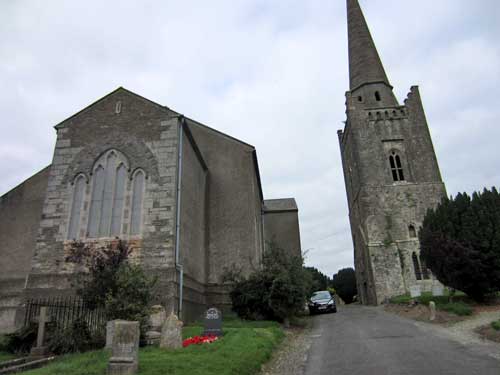
The 'new' church (left) and the old bell tower with newer spire
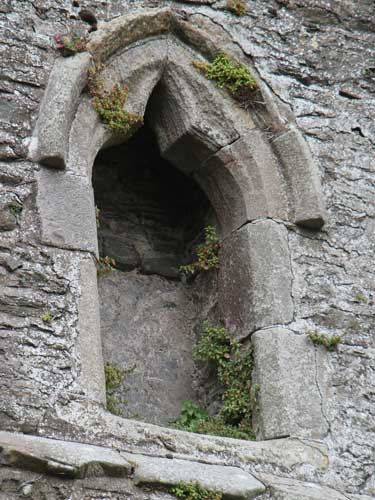

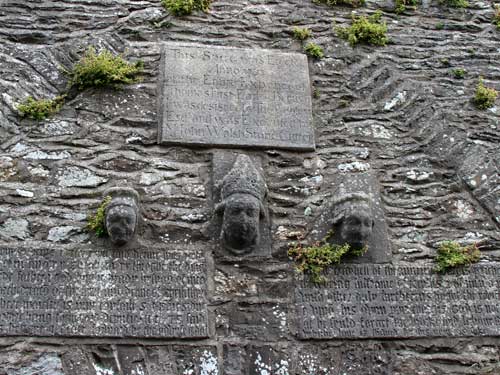
The prominent names in the rebuilding: Thomas Taylour (1724–1795, 1st Earl of Bective) paid for it. Thomas Cooley designed it. John Walsh cut the stones. Hugh Brady (Bishop of Meath) oversaw everything.

The bodie of this churche being i utter ruyn and decaie was reedified i ano dni 1578... through the diligce and care of the reverede father i god hughe brady byshop of Meah...

I'm guessing this is Bishop Brady.
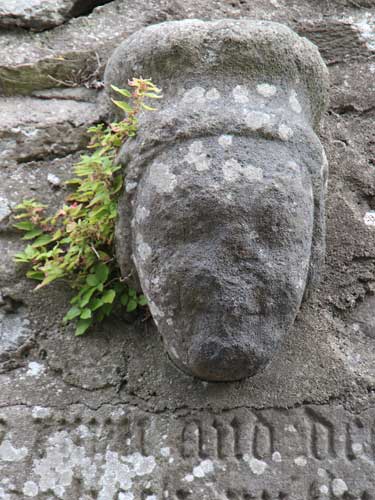
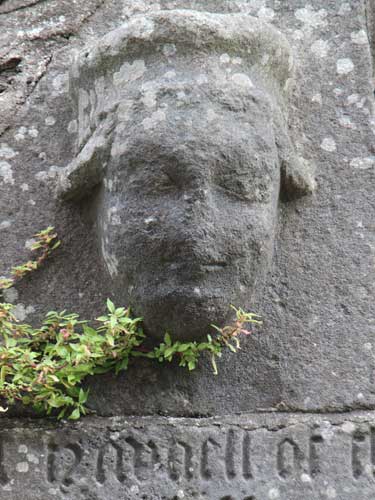

Could this be a dragon? (note the wings)
It is said that in 565, St. Columba stopped along the shore of Loch Ness on his way to visit a Pictish king. A man who was swimming in the lake was about to be attacked by a large beast. Columba raised his hand, invoked the name of God, and commanded the monster to 'go back with all speed'. The monster fled and the swimmer was saved. This, by the way, was the very first recorded Nessie sighting!
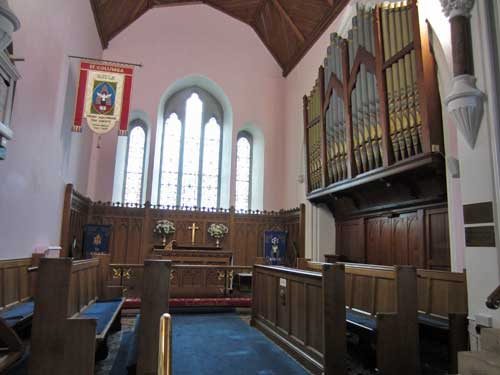
Inside St. Columba's Church

Erected in 1736, this monument honors Sir Thomas Taylor, 'one of his Majesty's most Honourable Privy Council', and his wife Ann who died in 1710.
Oh, so this is the guy who paid for the church? Um, not exactly:
- Sir Thomas Taylor, 1st Baronet (1662–1736) - the guy this memorial honors
- Sir Thomas Taylor, 2nd Baronet (1686–1757) - son of 1st Baronet
- Sir Thomas Taylour, 3rd Baronet & 1st Earl of Bective (1724–1795) - son of 2nd & grandson of 1st; guy who paid for the church
- Thomas Taylour, 2nd Earl of Bective & 1st Marquess of Headfort (1757–1829)
- Thomas Taylour, 2nd Marquess of Headfort (1787–1870)
- Thomas Taylour, 3rd Marquess of Headfort (1822–1894)
And ALL of them descend from an original Thomas Taylor, who came to Ireland during the 1650's from Sussex (England) to oversee the fiscal expenditure of Oliver Cromwell's campaign in Ireland.
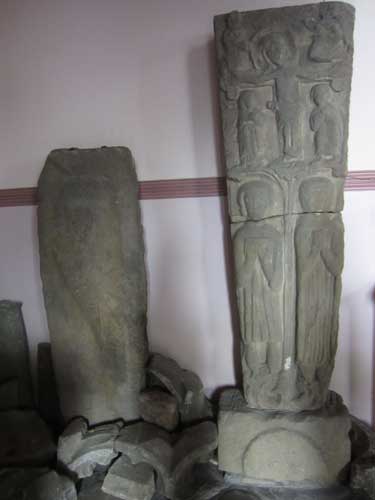
Old gravestones
The stained glass windows were made in London by Heaton, Butler & Byne around 1920.


This one commemorates the wife (Mary, who died in 1913 at age 63) and son (Guy Rambant, killed in action in 1916 at age 33) of Reverend John Healy. The left side is A Good Wife (Proverbs 31.27, "She looketh well to the ways of her household") ...

... and on the right is The Armour of God (Ephesians 6.11).
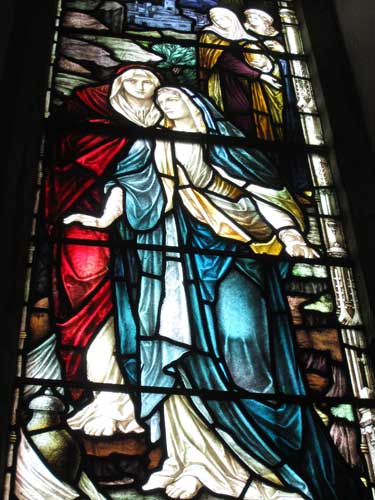

This window commemorates Henry Mortimer Dyas who died in 1915. It depicts The Angel at the Tomb.
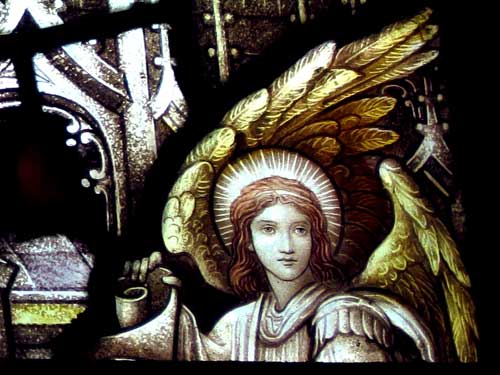
In a side alcove was a copy of the Book of Kells.
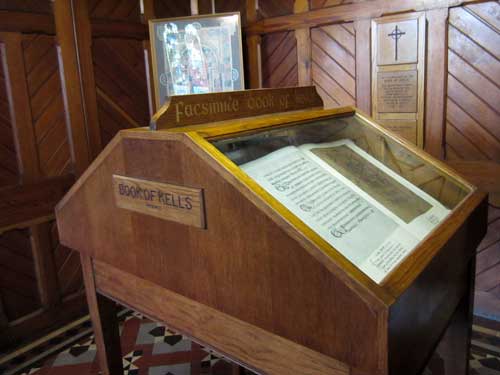
The Book of Kells is one of the most famous manuscripts produced during the late 6th through early 9th centuries in monasteries in Ireland, Scotland and England. It was very likely created around the same time the monastery was founded here in the early 800's.
The illuminated manuscript was written in Latin, covering the four Gospels of the New Testament. It combined traditional Christian iconography and symbolism along with the ornate motifs of Insular art (insula is the Latin term for island; this style was quite different from the rest of Europe) and exceeds all other works of that time in terms of extravagance and complexity. Calligraphy, human figures, mythical beasts and Celtic knots intertwine with each other and vibrant colors.
This monastery was its home for much of the medieval period, allowing it to somehow survive the constant Viking plundering. In 1007, however, it was stolen from the church. Fortunately it was recovered two months later... covered in dirt and missing its beautiful golden and bejewelled cover. It remained here in Kells until 1654, when Cromwell's cavalry arrived. It was sent to Dublin for safety, where it has remained ever since.

Pages from Luke 23:51-56, The Resurrection


A portrait of St. Matthew ... A page from Matthew 1:1, the genealogy of Jesus Christ

Up on the gallery in the back of the church was an exhibit created in 1967.
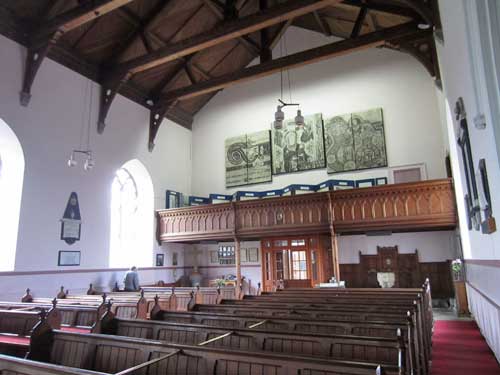
A view OF the gallery...

... and a view FROM the gallery, overlooking the church
The exhibit consisted of information about the High Crosses, numerous sample pages (folios) and close-up details from the Book of Kells, plus lots of other interesting local facts and items. Some of the illustrations were quite bizare!
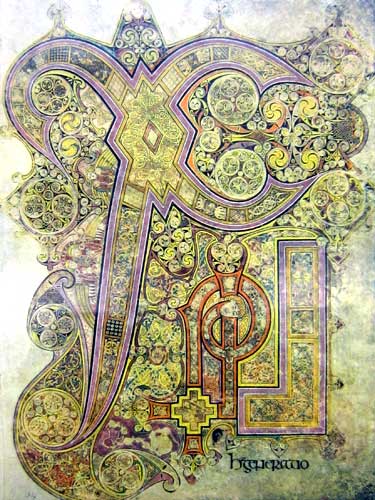
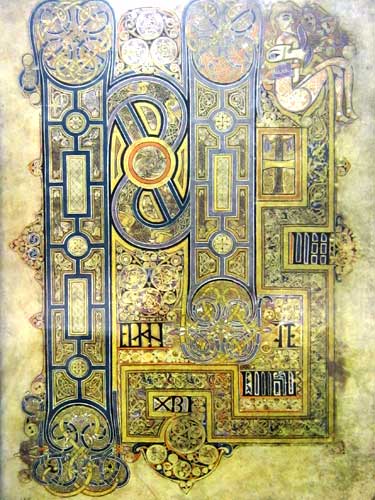
Folio 34r, The Birth of Christ from the gospel of St. Matthew ... Folio 130r, The Opening Words of the gospel of St. Mark

Folio 202v, The Temptation of Christ from the Gospel of St. Luke


The letter N of the phrase Nemo seruus potest duobus dominis seruire (Luke 16.13; ‘no servant can serve two masters’) shows two men pulling each other’s beards, with the servant hiding in the letter A below.

Folio 2v, Majestic head from top of arch
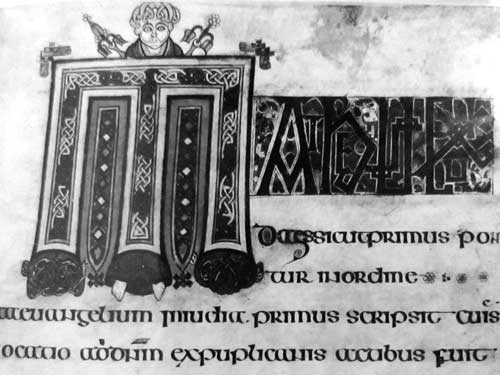
Folio 12r, Preface of the Gospel of St. Matthew
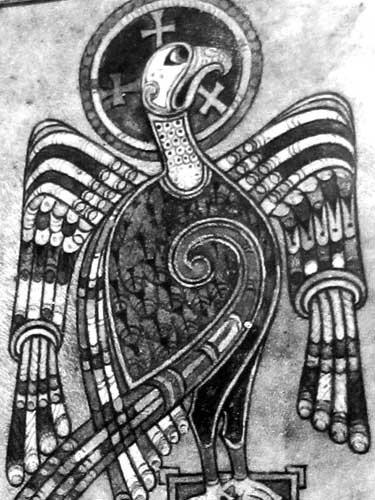

Details from Folio 27v, Eagle (symbol of St. John) ... and Folio 68v, the letter H
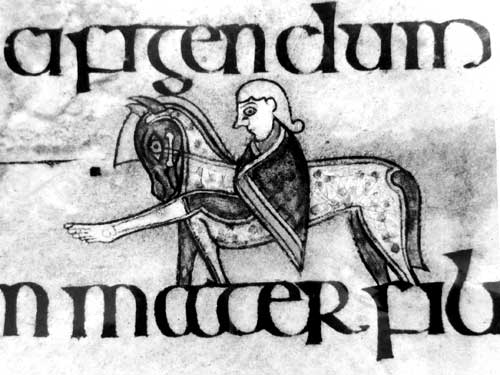
From Folio 89r

Detail from Folio 91r


Details from Folio 247v ... and Folio 243v

Some complicated knots in Folio 130r
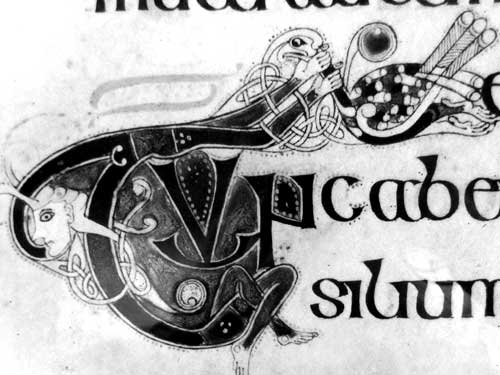
Folio 96r, letter T (man with a bird)

Folio 188v, with animals and fish
We left the church grounds and headed to Colmcille's House.

The cemetery wall

A Celtic cross decorated the street.
The small, stone chapel probably dates back to the 11th century. Its walls are almost 4 feet thick and the old doorway was raised about 8 feet off the ground. Apparently a steep iron ladder leads up to a loft.
It was locked so we followed the directions on the sign to get the key. Unfortunately nobody answered the door.
